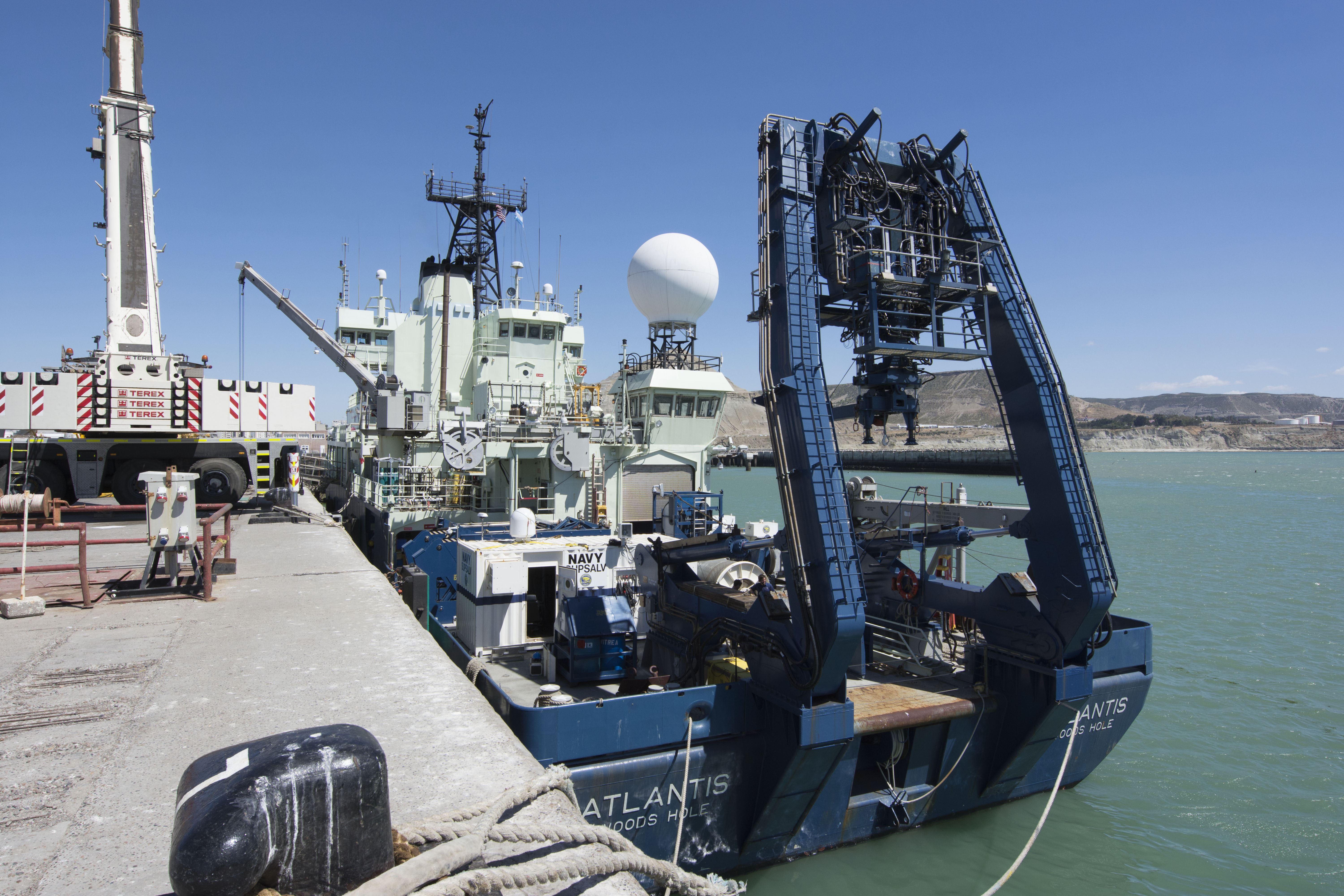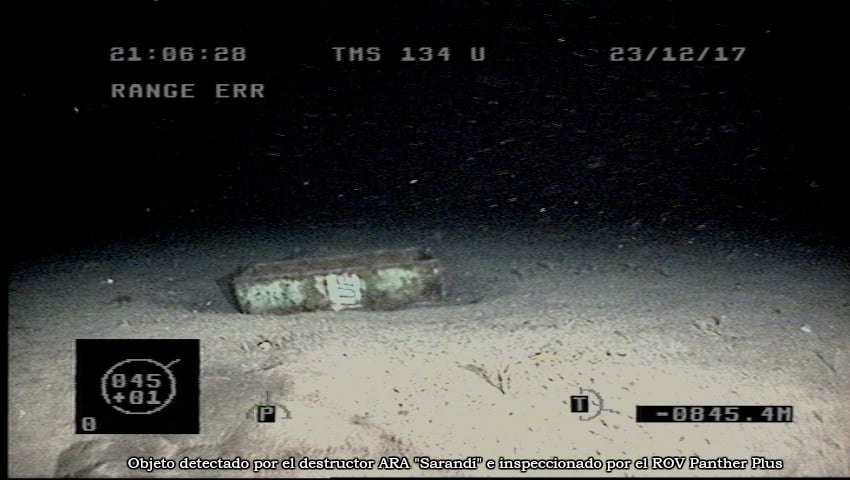
This post has been updated to include additional information from U.S. Naval Forces Southern Command/U.S. 4th Fleet.
The United States will end its portion of the search for missing Argentine submarine ARA San Juan in the South Atlantic today, after spending five and a half weeks searching for the sub that sank with 44 crew members onboard.
A small team of military and civilian personnel will remain in Argentina until Jan. 2, when the last strategic lift assets depart the region, U.S. Naval Forces Southern Command and U.S. 4th Fleet spokesman Cmdr. Erik Reynolds told USNI News. Today will be the last day U.S. naval assets in the water participate in the ongoing search.
After San Juan was reported missing on Nov. 17, U.S. Southern Command joined the international search within 24 hours, according to a SOUTHCOM news release. R/V Atlantis, an oceanographic research ship under charter with the U.S. Navy’s Office of Naval Research, had been one of five ships still actively searching the waters where the Argentine Navy believes its submarine sank.
“At its height, U.S. contributions to the search and rescue effort included three advanced aircraft, over 200 search and rescue personnel, four submersibles, one specialized underwater rescue unit, one ship, and more than 400 sonar buoys dropped in support of the operation,” according to the news release.
“Additionally, the United States provided the most advanced sonar system in the world, which was mounted on Argentine search vessels. U.S. planning and analytical specialists supported the efforts through data analysis; an effort that will continue.”
The Argentine Navy assigned U.S. assets various search areas, which U.S. assets swept twice each. Upon completing this tasking, U.S. forces decided to depart the area to resume work previously taking place before San Juan went missing.

Over the past few days, five ships have participating in the ongoing search: Argentine destroyer ARA Sarandí (D-13) and tugs ARA Puerto Argentino (A-21) and ARA Islas Malvinas (A-24); Atlantis, which has also operated the Cable-operated Unmanned Recovery Vehicle (CURV) 21 since early December; and Russian intelligence and oceanographic vessel Yantar. Russian remotely operated vehicle Panther Plus had been operating off Islas Malvinas, which was operating alongside Sarandí to explore possible contacts the destroyer detected.
The five ships and their ROVs found many possible contacts in recent days, all of which have turned out to be unrelated to the San Juan. Bad weather has also hampered efforts to explore possible contacts.
An Argentine Navy news release notes that, despite the U.S. search mission ending and Atlantis departing the region, “the United States will continue to provide support through expert personnel in data planning and analysis.”
“On behalf of the people of the United States, we offer our respects to the families of the crew of A.R.A. San Juan and the people of Argentina,” Rear Adm. Daniel Abel, SOUTHCOM director of operations, said in the SOUTHCOM news release.





